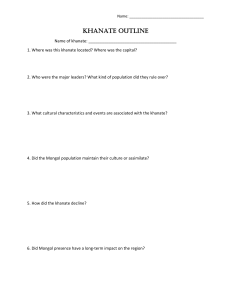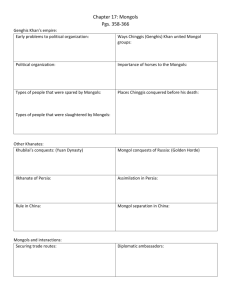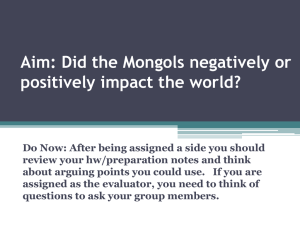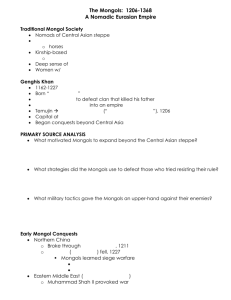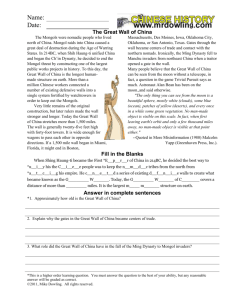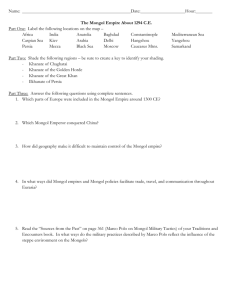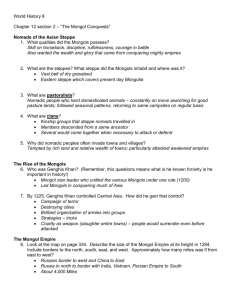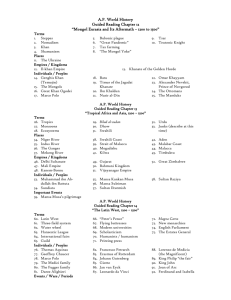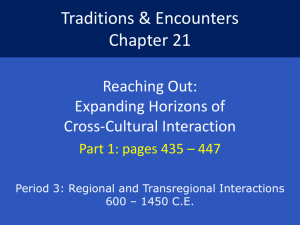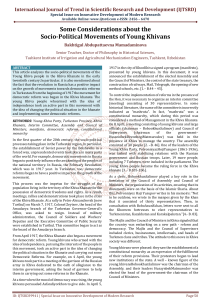The Impact of the Mongols
advertisement
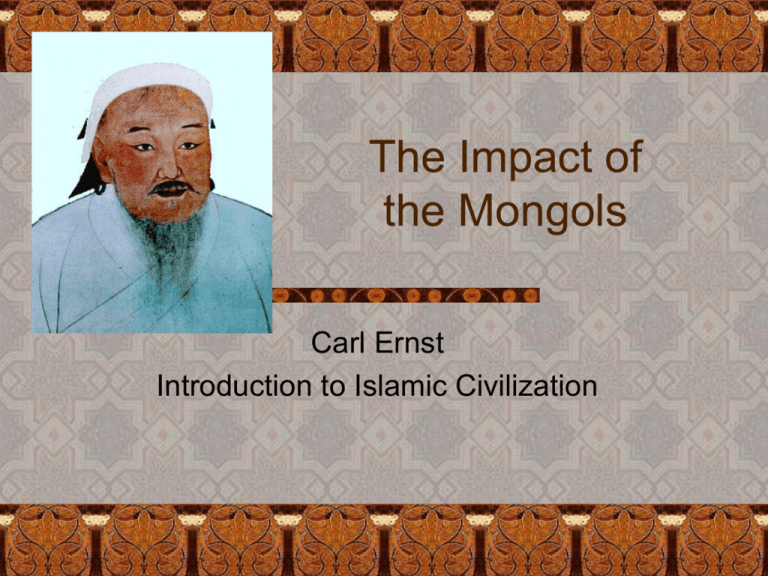
The Impact of the Mongols Carl Ernst Introduction to Islamic Civilization General remarks Mongol conquests much greater than Arab conquests, but short-lived Christian fantasies of Prester John, Christian king of the East (who would attack Muslims) Destruction of cities followed by rebuilding, flourishing long-distance trade (Marco Polo), and even an expansion and flourishing of Islamic civilization 2 Outline Mongol khanates A. Qipchaq B. Il-Khans C. Chaghatay New centers of Islamic culture A. Mamluks (Egypt) B. Delhi Sultanate C. Ottomans Scourges (plague, Timur) 3 1. After Chingiz Khan (d. 1227): 4 Mongol Khanates Qipchaq Khanate (Golden Horde), on Eurasian steppes Il-khanate (Persia) Chaghatay Khanate (Central Asia) Great Khanate or Yuan Dynasty (Mongolia, China) 4 5 6 7 A. Qipchaq khanate (Golden Horde) Collected tribute from Russians without integrating into Russian society Like most Mongols, tolerated religious missionaries of various types (insurance policy?) Gradual Islamization 8 B. Il-khans (Persia) Hulagu rebuilds destroyed cities, astronomical observatory at Maragha Devastation of northern Iran and Iraq First successors leaned towards Buddhism and Christianity In 1295, Ghazan converts to Islam Thriving culture and art 9 Ceramic prayer niche (Iran, 14thcentury) 10 Tent mosque; Qur’an page 11 Circular Royal tapestry 12 C. Chaghatay Khanate (later known as Uzbeks) Remained nomadic A coalition of Mongols, Turks, and Uighurs In 1326, Tarmashirin converts to Islam and orders all others to follow Empire collapses shortly afterward 13 14 2. New Centers of Islamic Culture: A. Mamluk Egypt Defeated Mongols in 1260 in Palestine Occupied Syria, Arabia Import of slaves for military leadership Loyalty to Amirs as core virtue, distance from local society, need for replacements Political instability Good relations with Byzantines, Italians 15 Mosque and madrasa of Sultan Hasan (Cairo, 14th century) 16 B. Delhi Sultanate Ghurids conquered Punjab and Delhi 1193, expanding into Ganges region Turkish Sultans with military slave background, Persian culture Resisted Mongol expeditions Expanded empire to South (2nd capital) Delhi a magnet for scholars and artisans Coexistence with vast Hindu majority 17 Expansion and decline of Delhi Sultanate 18 Qutb Minar 19 C. Ottoman Sultanate 20 Rise of Ottomans Succeed Saljuqs, who established Persian culture in Konya, though they remained subject to Mongols Ghazi raiders against Byzantines eventually establish state, expand into Balkans Recruitment of Christian knights (siege of Kosovo in 1389 – Serbian national myth) Forcible enrollment of Christian youths in military and bureaucracy (devshirme) 21 Konya Tomb of Rumi (d. 1273) 22 3. Scourges Black plague causes massive devastation Timur (Tamerlane) creates a neo-Mongol empire, causing great destruction. 23 Final thoughts Why did the Mongols not have a longerlasting civilization? Confrontations with Christian powers in name of God (Tenggri) who gave authority to Chingiz Khan Confrontations with Turkish rulers of Delhi Sultanate: is the Mongol law (yasa) stronger than Islamic shari`a? Weakness of non-textual cultures 24
